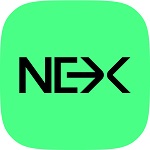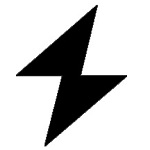Overview
|
What is Perlin
Perlins own native ledger is a directed-acyclic-graph (DAG) utilizing the Avalanche consensus protocol, that provides the scalability and throughput necessary to make decentralized compute resource sharing possible. DAG is a data structure that maintains a topological sorting. It is comprised of a series of nodes with directed edges between earlier and later nodes within the sequence and it presents itself as one of the first alternatives to blockchains scalability issues. On their platform Perlin promises to implement:
- A ledger capable of 1300 tps with latency time of 4 seconds;
- A leaderless consensus protocol;
- A privacy-preserving layer, which would withstand Byzantine adversaries;
- Scalable dApp development support.
Perlins compute layer is bootstrapped on top of its DAG-based ledger unlocking the underutilized compute resources from everyday devices, to form a decentralized cloud computing marketplace. Miners with everyday devices such as smartphones, can rent away idle compute capacity in exchange for a virtual currency termed PERLs, to customers of the network.
Assessing from how distributed ledgers have scaled throughout the years, Perlin introduces a different mindset as to how distributed ledgers may be utilized for the development of decentralized applications and technical infrastructure.
For example, Perlin was intentionally designed to not support Turing-complete smart contracts. Rather, should a developer wish to develop a decentralized application on Perlin, developers would instead utilize Perlin as a ledger that bypasses middlemen and brings finality and consensus into off-chain high-throughput computing systems.
Hence, rather than having Turing-complete smart contracts, Perlin provides a platform in which developers can both write and run smart contracts compiled as WebAssembly bytecode that only exist for the sake of bringing finality and consensus into an off-chain system.
More specifically, smart contracts work as either time, resource, or signature lock verification mechanisms redundantly computed across all nodes in Perlin's network which reward, deplete, or release funds that are in the form of mintable tokens called perls.
DetailsPre-sales: Sep 10, 2018 - Sep 28, 2018Public sales: Oct 01, 2018 - Oct 26, 2018 IEO (Binance Launchpad): Aug 25, 2019 - Aug 25, 2019 Total tokens for sale: 580,968,360 PERL Soft cap: 8,000,000 USD Hard cap: 52,950,000 USD Raised: 52,950,000 USD LegalBlockchain Platform: EthereumCountry limitations: Albania, Bosnia & Herzegovina, Belarus, Democratic Republic of Congo,Cuba, Côte d'Ivoire, Iraq, Iran, North Korea, Liberia, Macedonia, Myanmar, Serbia, Sudan, Syria, United States of America and its territories (American Samoa, Guam, the Northern Mariana Islands, Puerto Rico, and the U.S. Virgin Islands), Zimbabwe Registration country: Australia | Token infoTicker: PERLType: Utility-token Token standard: ERC20 Token price in USD: 1 PERL = 0.2 USD Accepted currencies: ETH, BTC, LTC, BCH, BNB Token distribution: 19.12% - Foundation 20% - Seed Round 8.38% - Launchpad Sale 8.36% - Private Round 15% - Team 9.65% - Advisors 19.49% - Strategic Sale |
Perlin Roadmap
First proposal of the Perlin certification technology
Presentation MVP to private investors – Private sale
ICO Public Pre-sale
Perlin ICO Main Sale
Token Issue and Exchanges trade open
Running Testnet
Mainnet run and migrate tokens to Perlin main network.
Project team






















